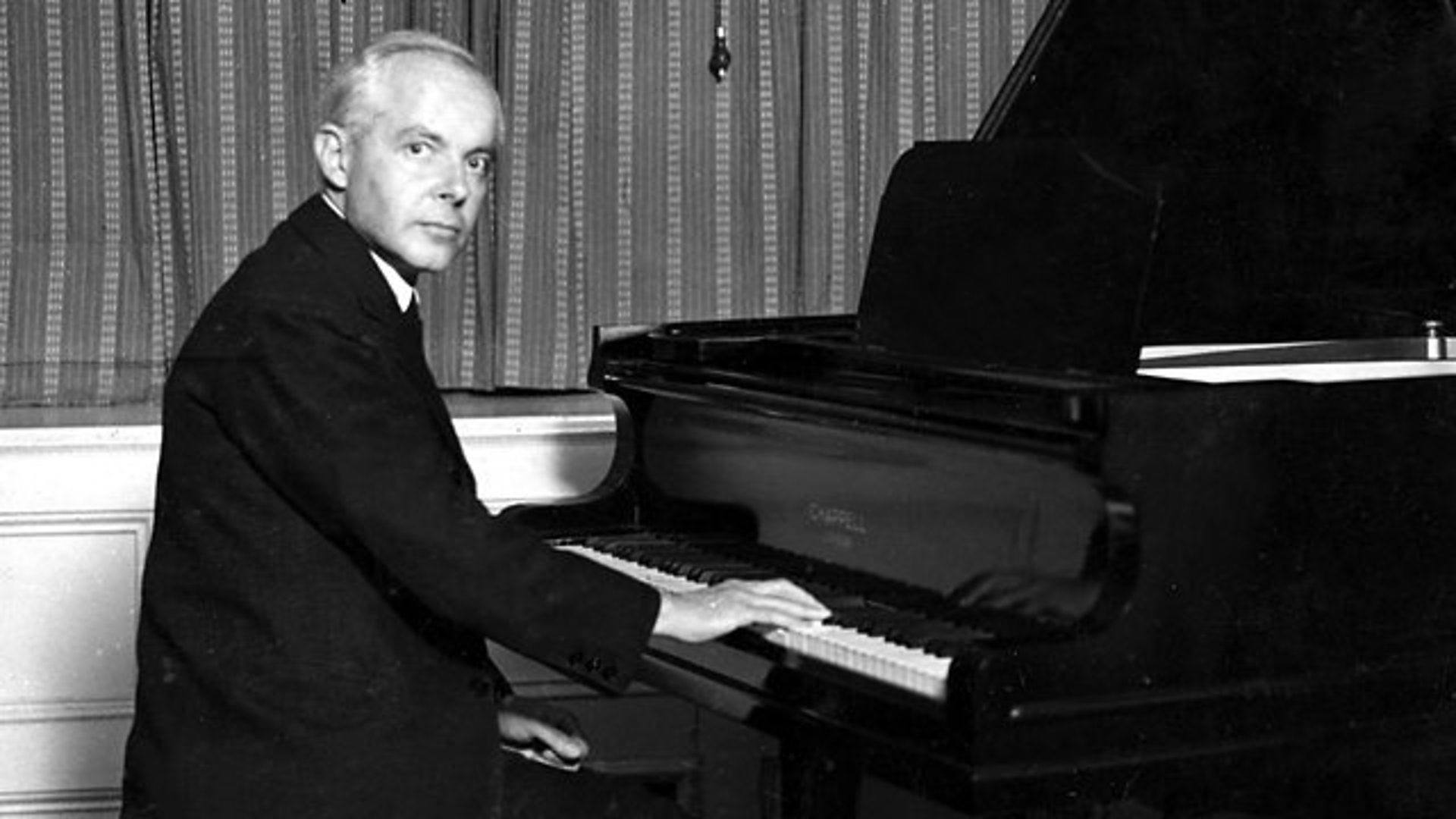The piano music of Béla Bartók is filled with the hard edges and exhilarating, swirling motion of Eastern European peasant dances. It strips away Romantic embellishment in favor of something more direct, austere, earthy, and primal. The piano, with its hammer-striking mechanism, becomes a full-fledged percussion instrument.
All of this can be heard in Bartók’s solo piano Suite, Op. 14, composed in 1916. In a 1944 radio interview, Bartók said,
When this work was composed I had in mind the refining of piano technique, the changing of piano technique, into a more transparent style. A style more of bone and muscle opposing the heavy chordal style of the late, latter romantic period, that is, unessential ornaments like broken chords and other figures are omitted and it is more a simpler style.
Although Bartók did not include any direct quotes, echoes of folk music pervade the Suite’s four movements. Modal and whole tone scales create an exotic flavor. The first movement (Allegretto) whirls with the breathless energy and rhythmic repetition of a Romanian folk dance. (There is a clear homage to the Ardeleana rhythm). Rising from a bright vamp, the harmony pulls our ears in many different directions. Listen carefully for all of the “wrong” chords and subtle surprises. Following the middle section’s crashing, tumultuous climax, the giddy melodic line jumps briefly a beat and then deftly rights itself (1:20).
The athletically leaping second movement (Scherzo) includes a twelve-tone row, a compositional device Bartók rarely used. We hear the piano at its most thrillingly percussive. As the music progresses, the tension builds amid cloudy, ominous chords and jagged rhythms set against an ostinato. There is a hint of jazzy improvisation. We ride the thin line between playful adventure and danger.
In the summer of 1913, Bartók traveled to the Biskra region of North Africa (now part of Algeria). In the third movement (Allegro molto), we hear the strong influence of the Arab music he heard there. (Bartók remained fascinated with the music of North Africa, and attended the Cairo Conference of Arab Folk Music in 1932). This music hurtles forward with the wild, demonic ferocity which would later emerge in Bartók’s 1926 ballet score, The Miraculous Mandarin.
The final movement (Sostenuto) fades into dreamy, nocturnal shadows. With each of the first three movements, the tempo is nudged slightly faster. Yet here, we get a sense of the music winding down. There is a quiet, underlying restlessness in these halting, sighing lines. In the final bars we are left with a sense of haunting mystery.
I. Allegretto:
II. Scherzo:
III. Allegro molto:
IV. Sostenuto:
Recordings
- Bartók: Suite, BB 70, Sz. 62 (Op.14), Zoltán Kocsis Amazon

